[Understand in 30 Seconds] What is the New Service Using Satellite Image Data?
This series explores Japanese space ventures and how space can be utilized. This installment features Tomoya Nakamura, CEO of Axelspace (developing microsatellites), and Masafumi Tanizawa, General Manager of Dentsu Digital Inc.'s Data Analytics Division, discussing the potential of marketing using satellite imagery data—space big data—observing Earth.
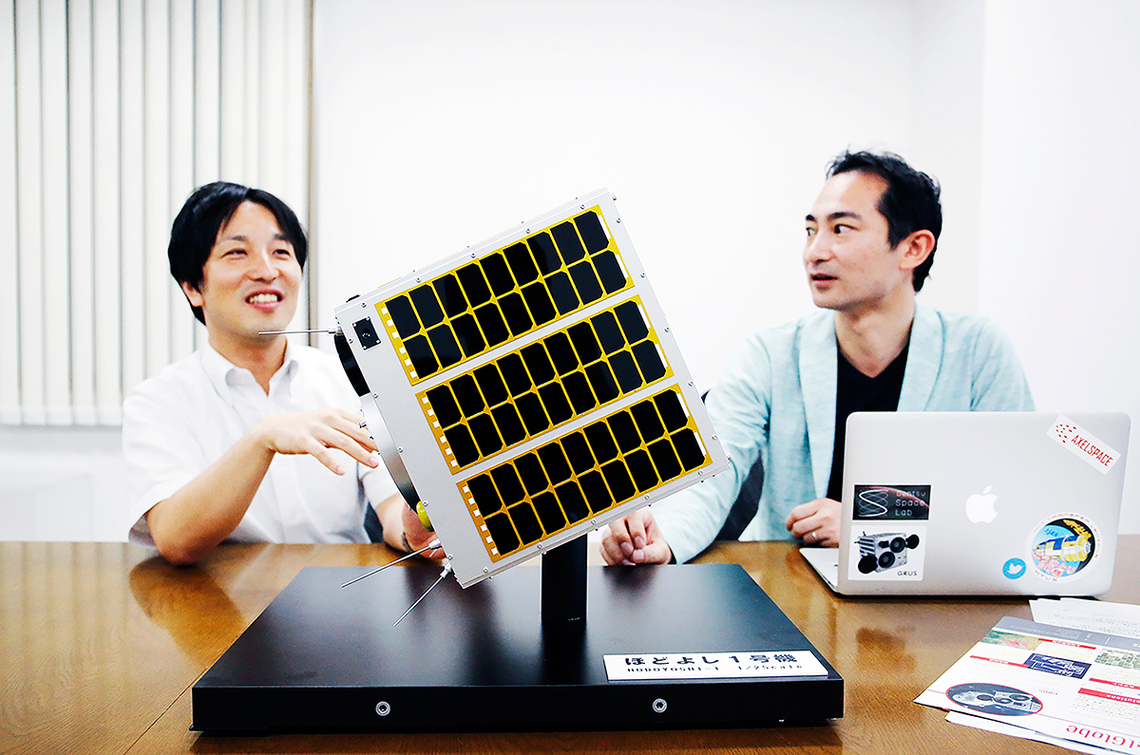
(From left) Axelspace CEO Nakamura and Dentsu Digital Inc.'s Tanizawa
The conviction that "ultra-small satellites will become new infrastructure"
Tanizawa: Through collaboration between Axelspace and Dentsu Inc., we've decided to develop new marketing solutions using data analysis from microsatellites ( see Dentsu Inc. News Release ). While space is an unknown field for Dentsu Inc., that's precisely why we believe we can boldly challenge new initiatives unconstrained by conventional wisdom.
By the way, the space business has seen rapid growth in recent years. Did you anticipate this situation when you founded Axelspace, Mr. Nakamura?
Nakamura: Back then, I didn't foresee the entire space business booming to this extent. It wasn't that I suddenly thought, "The era of space business is coming!" like some American IT billionaire. Rather, I was strongly driven by the desire to somehow make the microsatellite technology I built with my peers during my student days useful and give back to society. The founding members are those same peers.
The origin of our technology lies in the "CubeSat," an ultra-small satellite I was deeply involved in developing as an engineer during my student days. Its successful launch in 2003 drew significant attention as the world's first satellite built entirely by university students that was launched and functioned properly.
This success prompted universities worldwide to start developing their own CubeSats, leading to the widespread perception that CubeSats were primarily educational projects. However, we firmly believed that "ultra-small satellites must be able to contribute to society."
Tanizawa: Starting a business alone must be incredibly challenging, and diving into the unknown world of space business is quite daring.
Nakamura: If starting a company had been the goal, I don't think we would have pursued space business. The risks are simply too great, and it's difficult to envision a viable business model. While we lacked management expertise, we were absolutely convinced that "ultra-small satellites would become a new form of infrastructure."

"With the success of CubeSat, Japan became a global frontrunner in the field of nanosatellites. While space business often conjures images of Europe and America, I believed this company—assembling development members from the University of Tokyo and Tokyo Institute of Technology—couldn't lose," said Nakamura.
Arctic sea ice is dangerous... Supporting safe ship navigation with satellite imagery
Tanizawa: Axle Space's rapid rise began with the project with Weathernews, right?
Nakamura: That's right. But before that, we visited dozens of companies searching for customers. One advantage of microsatellites is that you can have your own dedicated satellite for about one-hundredth the budget of a traditional large satellite. While the initial cost is high, you can use it for years, so it pays off in the long run.
We thought, "Since it's cheaper now, surely someone will buy it," and our prospects were intrigued, saying things like, "We can have our own satellite!" But neither side could fully visualize how it would actually be used in business.
Tanizawa: That's right. There was no precedent for a single company owning an ultra-small satellite and leveraging it for business.
Nakamura: Around that time, I had the opportunity to meet with Weathernews's Chief Technology Officer. Weathernews provided a service to shipping companies worldwide, offering the optimal route for each voyage by factoring in weather and sea conditions along with the ship's performance.
At that time, the melting of Arctic sea ice was progressing, and the potential for it to become a new navigable route was beginning to attract attention. For shipping companies, the Arctic sea route presented an opportunity to drastically shorten voyage distances, but they couldn't simply sail through without any information. Ice floes posed a risk of damaging the hull, and in the worst case, could lead to accidents.
Given the harsh local environment, terrestrial solutions were impractical. Yet, utilizing existing satellite imagery would be prohibitively expensive. I intuitively realized that only microsatellites could make this business viable.
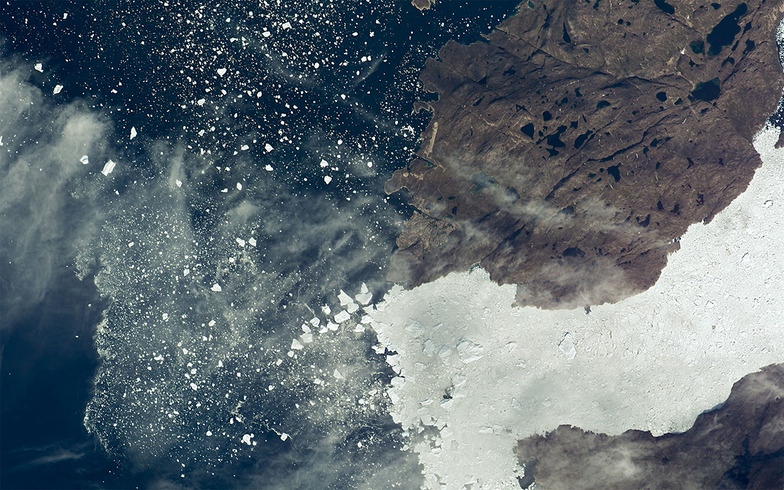
Observation image of Arctic sea ice. Captured by the 60-kilogram microsatellite "Hodoyoshi-1" ©AXELSPACE
Tanizawa: So you connected the challenges faced by the company to a proposal leveraging the strengths of nanosatellites. By the way, is there anything that stands out to you from your interactions with Weathernews?
Nakamura: What customers think, how they think, and where they invest. Even in the unique arena of space, the essence of business remains the same. It was an opportunity to reaffirm that crucial point.
Previously, I assumed that securing one successful case would naturally lead to new customer acquisition. So, after Weathernews' satellite launched successfully, I approached other companies. But they responded, "That was only possible because it was Weathernews. Currently, we can't envision a business model using satellites, so such a bold investment is difficult."
It's a common trap for engineers to fall into: thinking that "if you build it, they will come." But that's not necessarily true. Technical prowess alone isn't enough. No matter how good something is, it must be something the customer wants. I felt that truth keenly.
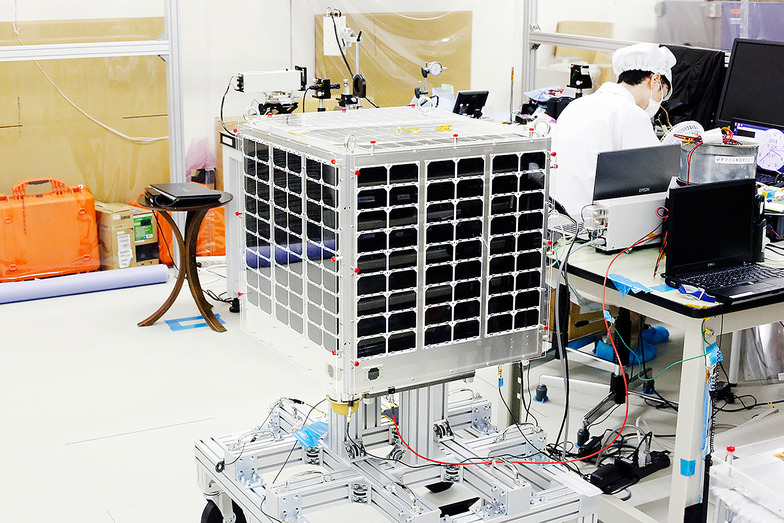
Because they are ultra-small satellites, design and manufacturing can be done in a corner of an office floor without needing a factory. While dedicated satellites are custom-made, having the manufacturing equipment nearby allows for rapid response through trial and error.
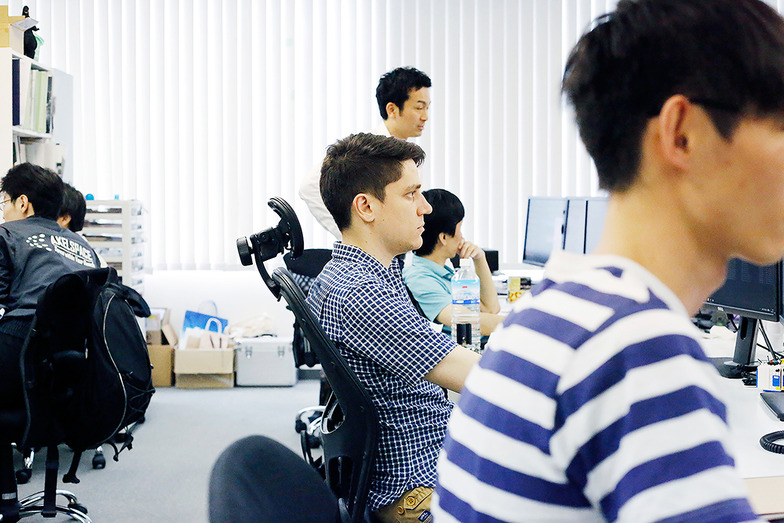
In the U.S., where space ventures thrive, security restrictions prevent hiring foreign staff. Consequently, when Axelspace recruits, most applicants are foreigners. Attracting top talent globally creates growth opportunities for the company. Currently, Italian and French staff members are employed.
Information obtained from satellite imagery can become a new marketing approach.
Tanizawa: There's a marketing analogy called the "Drill Inc." "Customers don't want a Drill Inc.; they want a hole in the wall. Finding that solution is marketing." Satellites are the same. I feel that if we can grasp the needs, it opens up all kinds of possibilities.
Nakamura: Customers don't want satellites themselves; they want to enjoy the value satellites deliver. That led us to the "AxelGlobe" Earth observation network project. We own dedicated satellites and provide customers only with the images obtained from them and the information extractable from those images.
We started in 2017 with three satellites providing daily observation of specific regions, and our goal is to have 50 satellites by 2022.
This is expected to yield several petabytes (2 to the 50th power, or 1,000 terabytes) of image data annually, enabling us to gather information daily on nearly all areas of human economic activity worldwide.
Tanizawa: Where specifically do you see these observation images being utilized?
Nakamura: In agriculture, for example, monitoring crop growth allows farmers to determine the optimal harvest time and manage water and fertilizer use.
They can also be used for monitoring large-scale infrastructure like plants and mega-solar facilities. Beyond these, we believe applications are possible across all fields, including forestry, urban planning, and disaster prevention.
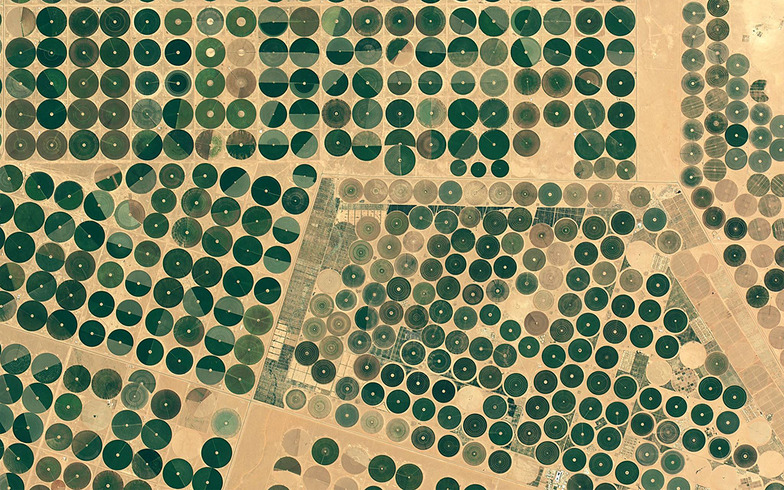
Circular farm created in the Saudi Arabian desert ©AXELSPACE
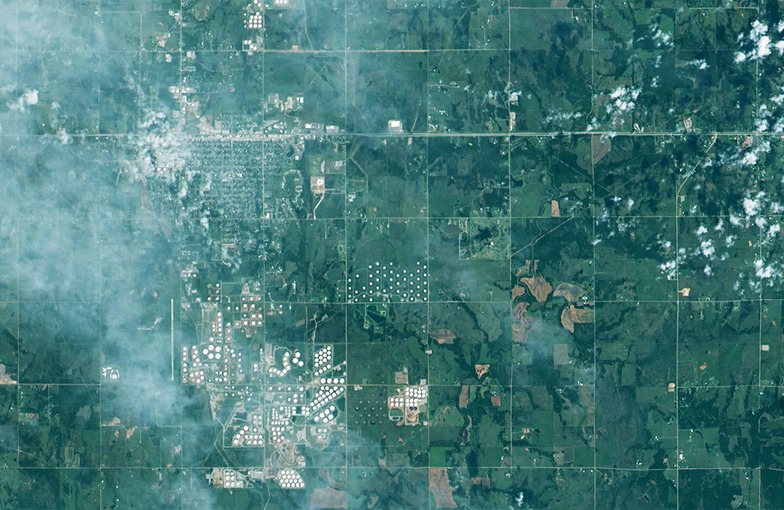
The world's largest crude oil tanks line up in Oklahoma, USA. Information on storage levels is said to influence crude oil prices. Some companies use satellites and other means to publish estimated storage levels faster than official announcements. ©AXELSPACE
Combining "satellite imagery" with "something" creates new value
Tanizawa: While we hear the era of big data has arrived, I feel many customers still can't fully imagine what can be done with that data. What effects are you aiming for by providing data, President Nakamura?
Nakamura: Rather than just providing data or having it used in specific industries, we aspire to become a platform provider for everything. We aim to be, so to speak, the Apple of space.
Take the iPhone as an example: Apple provides the hardware, OS, and core functions, while app developers build on that foundation to add their own unique value and sell their products. We want to create that kind of model.
The reason is that we believe very few problems can be solved with satellite imagery alone. By combining "space" with "something else," new value should emerge.
What we want to achieve with AxelGlobe is to create a foundation for diverse businesses. In that sense, I believe our role is significant.

Tanizawa: Through our collaboration with your company, Dentsu Inc. aims to connect space big data to solving client challenges and societal issues themselves. What do you expect from Dentsu Inc.?
Nakamura: Given your extensive connections with diverse companies, we would greatly appreciate it if you could serve as a hub connecting us with businesses that currently feel distant from space business.
Also, we inevitably get stuck in fixed ideas like "this is what microsatellites or space business is." Since your company has diverse perspectives, we'd like you to share ideas that aren't bound by conventional theory.
Tanizawa: That's precisely our strength. Leveraging Dentsu Inc.'s creative and planning capabilities, we believe we can generate diverse ideas and solutions. As a "space agency," we want to explore business opportunities together that make space feel accessible.
For example, we envision launching Japan's "most efficient AI agriculture project," leveraging Axelspace's space big data technology alongside participating agricultural groups, local governments, and partner companies. If successful, we could export that know-how globally.













